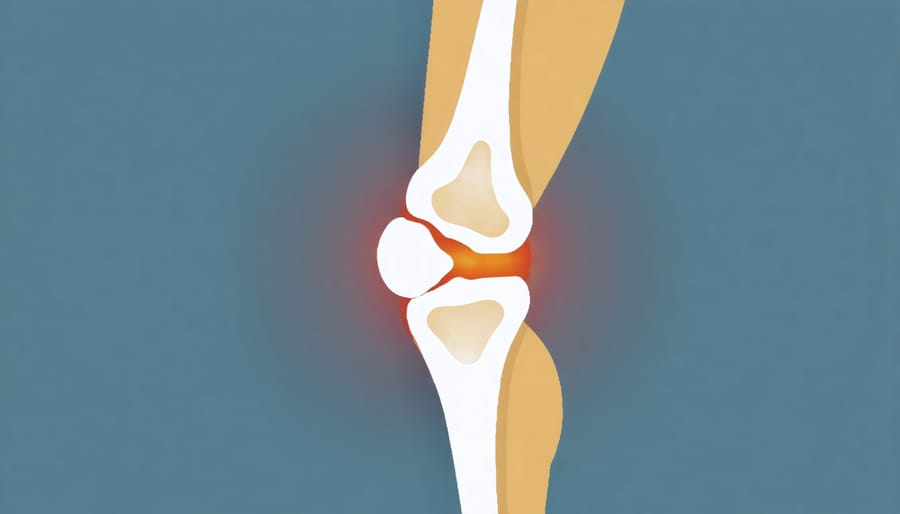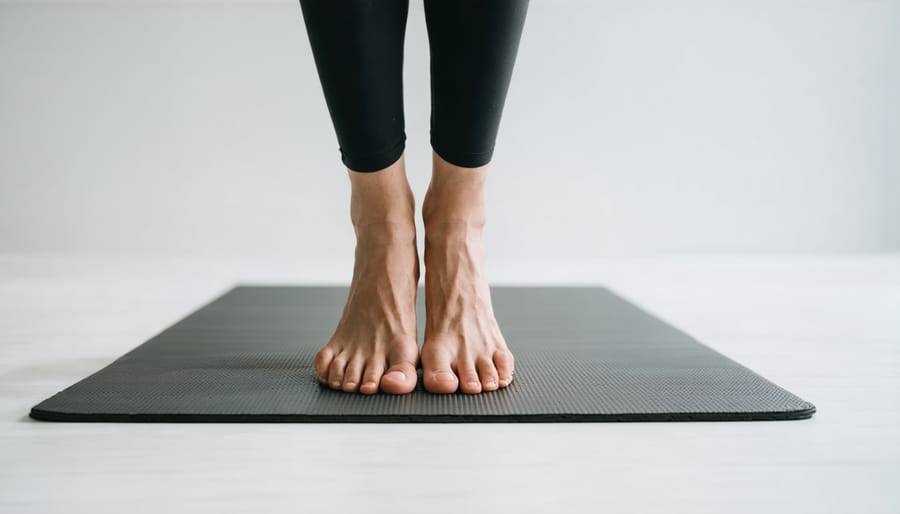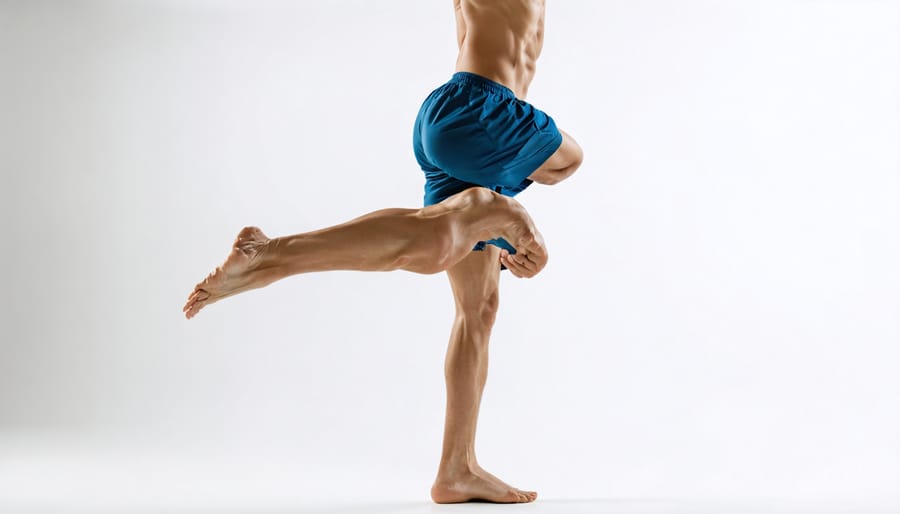Rebuild knee strength safely through progressive, scientifically-proven recovery strategies designed for optimal healing. Start with gentle range-of-motion exercises like heel slides and assisted knee bends, advancing gradually to weight-bearing movements. Master proper form in basic exercises before attempting more challenging rehabilitation work, reducing the risk of re-injury while building crucial stabilizing muscles. Focus initially on isometric exercises that strengthen surrounding muscles without stressing the injured joint, then progress to dynamic movements as pain subsides and mobility improves. Every knee injury demands personalized attention – these evidence-based exercises, when performed under professional guidance, create a solid foundation for returning to full activity while minimizing setback risks. Combine targeted strengthening with appropriate rest periods, ice therapy, and careful monitoring of pain signals to ensure steady progress through each rehabilitation phase.

Understanding Your Knee Injury
When to Start Exercising
Starting an exercise routine after a knee injury requires careful consideration and often professional guidance. The best time to begin rehabilitation exercises typically depends on several key indicators from your body. First, ensure that any acute pain and swelling have significantly decreased – you should be able to bear weight on your injured leg without severe discomfort.
Wait until you’ve received clearance from your healthcare provider, who will assess your knee’s stability and range of motion. Generally, this happens after the initial inflammatory phase has passed, usually 48-72 hours post-injury for minor injuries, or several weeks for more serious conditions.
Look for these positive signs that indicate you’re ready to start: minimal to no swelling, ability to bend and straighten your knee (even if limited), and being able to walk with minimal pain. If you experience sharp or severe pain, stop and consult your healthcare provider.
Start gradually with gentle range-of-motion exercises before progressing to strength training. Remember that every injury is unique, and your recovery timeline may differ from others. Listen to your body and avoid rushing the process to prevent re-injury.
Phase 1: Initial Recovery Exercises
Range of Motion Exercises
Range of motion exercises are essential first steps in knee rehabilitation, helping you regain flexibility and movement safely. By incorporating mindful movement techniques, you can perform these exercises with better awareness and control.
Start with gentle heel slides while lying on your back. Slowly slide your heel toward your buttocks, then return to the starting position. Aim for 10-15 repetitions, focusing on smooth, controlled movements.
Seated knee flexion and extension exercises are equally important. Sit on a chair with your feet flat on the floor. Slowly straighten one knee until your leg is parallel to the ground, hold for 5 seconds, then return to the starting position. Repeat 10 times with each leg.
Another beneficial exercise is the passive knee bend. While seated, use your hands to gently guide your knee through its range of motion. This helps improve flexibility without putting excessive stress on the joint.
Remember to:
– Move slowly and steadily
– Stop if you experience pain
– Perform exercises on both knees
– Maintain proper posture
– Listen to your body’s limits
Start with 2-3 sets daily, gradually increasing as your knee becomes stronger. Always follow your healthcare provider’s guidance on exercise progression and intensity.

Isometric Strengthening
Isometric exercises are a gentle yet effective way to begin rebuilding strength in your knee without putting excessive stress on the joint. These exercises involve contracting your muscles without moving the joint itself, making them particularly safe during the early stages of knee injury recovery.
One of the most fundamental isometric exercises is the quad set. While lying on your back with your injured leg straight, tighten your thigh muscle and hold for 5-10 seconds. Focus on pushing the back of your knee down toward the floor. Aim for 10-15 repetitions, three times daily.
Wall sits are another valuable isometric exercise. Stand with your back against a wall, then slide down until your thighs are parallel to the ground, as if sitting in an invisible chair. Hold this position for 10-30 seconds, depending on your strength level. Start with 3-5 repetitions and gradually increase as you build strength.
For inner thigh strengthening, sit with your knees bent and place a small pillow between your knees. Squeeze the pillow gently and hold for 5-10 seconds. Remember to breathe normally during all exercises and stop if you experience any sharp pain.
Begin with shorter hold times and fewer repetitions, gradually increasing as your strength improves. Always maintain proper form and alignment to ensure maximum benefit and prevent further injury.
Phase 2: Progressive Strengthening
Weight-Bearing Exercises
Once your healthcare provider gives approval, incorporating weight-bearing exercises is crucial for the muscle rebuilding process and restoring knee function. Start with partial weight-bearing exercises like supported squats using a chair or wall for balance. Begin with shallow movements, gradually increasing depth as strength improves.
Step-ups are another effective exercise, starting with a low step height of 4-6 inches. Place your injured leg on the step, pushing through your heel to lift your body while maintaining control. Progress to higher steps only when comfortable with lower heights.
Single-leg stands help rebuild balance and stability. Start by holding a stable surface, gradually reducing support as confidence grows. Aim for 30-second holds, working up to performing the exercise without support.
Remember to listen to your body and stop if you experience pain. Proper form is essential – keep your knee aligned with your toes and avoid letting it collapse inward during these exercises. Progress slowly and consistently rather than rushing through rehabilitation stages.
Balance and Proprioception
Balance and proprioception exercises are essential for rebuilding knee stability and helping your body better understand where your knee is positioned during movement. Start with simple standing exercises, keeping a chair or wall nearby for support if needed.
Begin with single-leg stands, holding the position for 15-30 seconds on each leg. As you gain confidence, try closing your eyes briefly to challenge your balance further. Progress to gentle weight shifts, moving your body weight from side to side while maintaining proper knee alignment.
Add dynamic movements like walking heel-to-toe in a straight line or standing on one leg while making small circular movements with the other foot. Using a balance pad or soft surface can increase the difficulty of these exercises once you’re ready.
Remember to focus on maintaining proper form throughout each exercise. Your knee should stay aligned with your second toe, and you shouldn’t feel any pain. Start with 2-3 sets of each exercise, performing them 3-4 times per week. If you experience any discomfort, return to simpler movements or consult your healthcare provider.

Safety Guidelines and Modifications
When performing safe recovery exercises, always listen to your body and respect your pain limits. Stop any exercise that causes sharp or intense pain, and distinguish between normal muscle fatigue and joint discomfort. Start with gentle movements and gradually increase intensity as your knee tolerates more activity.
Modify exercises based on your comfort level. If standing exercises cause pain, try seated variations first. For example, convert standing leg raises to lying leg raises, or perform wall slides instead of full squats. Use supports like chairs or walls when needed, and consider exercising in water to reduce joint stress.
Keep these essential safety guidelines in mind:
– Always warm up for 5-10 minutes before exercising
– Maintain proper alignment with your knee tracking over your toes
– Use ice after exercise if swelling occurs
– Take rest days between workout sessions
– Wear appropriate supportive footwear
– Exercise on a stable, non-slip surface
If you experience increased swelling, persistent pain, or decreased range of motion, pause your exercise routine and consult your healthcare provider. Remember that recovery timelines vary for each person, so avoid comparing your progress to others. Focus on consistent, controlled movements rather than rushing through repetitions.
Recovering from a knee injury requires patience, dedication, and proper guidance. The exercises outlined in this article provide a foundation for rehabilitation, but remember that every injury is unique. Always start gradually and listen to your body’s signals during recovery. While these exercises can support your healing journey, it’s essential to work with healthcare professionals who can assess your specific condition and adjust your rehabilitation plan accordingly. Regular check-ins with your physiotherapist or doctor will help ensure you’re progressing safely and effectively. With consistent effort and proper medical supervision, you can work towards restoring your knee’s strength, flexibility, and function while minimizing the risk of re-injury. Stay committed to your recovery plan, and don’t hesitate to seek professional advice if you experience persistent pain or uncertainty about any exercise.

